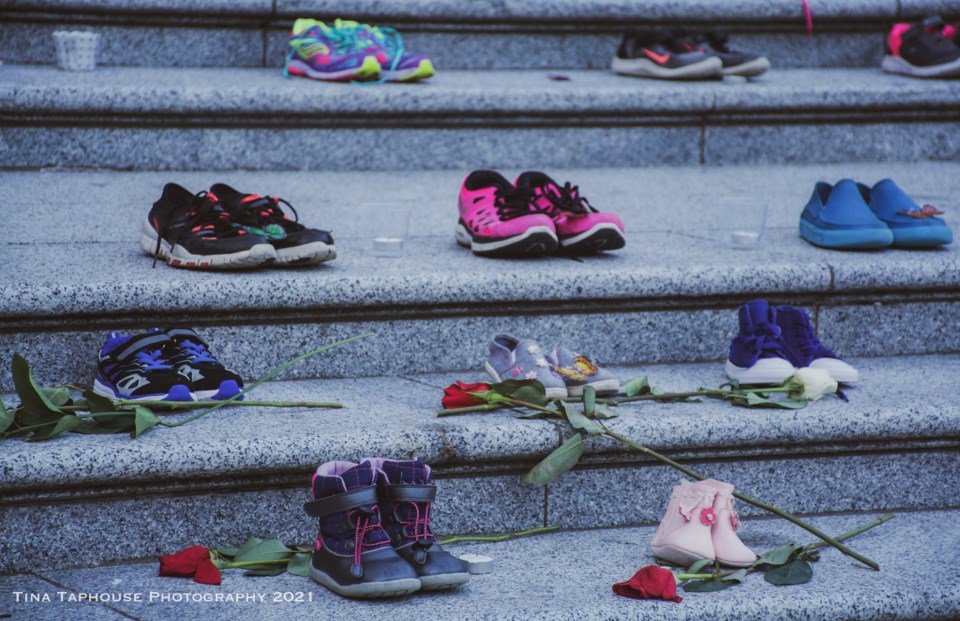Those visiting the Vancouver Art Gallery on Saturday will see 215 pairs of children's shoes carefully laid across the gallery's steps—one pair for each of the 215 children whose remains were discovered last weekend, buried at the former site of the Kamloops Indian Residential School.
Tk’emlups te Secwepemc Chief Rosanne Casimir announced on Thursday that the band confirmed the remains via ground-penetrating radar. Some of the children were as young as three years old, she said.
The powerful tribute on the steps of the downtown Vancouver gallery was organized on Friday by artist Tamara Bell, . After learning of the heart-wrenching discovery, Bell—who told CTV her mother attended a residential school—reached out to her network for their assistance compiling the memorial that's now helping British Columbians visualize the sheer scope of the 215 lives lost.
Alongside the rows of shoes, people have laid candles, toys, flowers and messages of condolences. People across the country took to social media Saturday to share photos of the poignant tribute and to recount the grief they've experienced since learning of the discovery.
Meanwhile, to their respective communities, according to Assembly of First Nations regional chief Terry Teegee.
The Kamloops residential school, which operated between 1890 and 1969, was once Canada's largest residential school. The federal government took over the institution and ran it as a day school until the facility was closed in 1978. Casimir said on Friday that more bodies may be found as more areas across the school grounds are searched.
Premier John Horgan on Friday issued a statement saying he was “horrified and heartbroken" to learn of the discovery.
"I honour Tk’emlúps te Secwépemc as they grapple with this burden from a dark chapter of Canadian history and uphold their commitment to complete this investigation over the coming weeks – bringing to light the full truth of this loss," he continued.
“Each child has been forever taken from a family and a community that loved them. This is a tragedy of unimaginable proportions. And it is a stark example of the violence the Canadian residential school system inflicted upon Indigenous peoples and how the consequences of these atrocities continue to this day."
- With files from the Canadian Press




